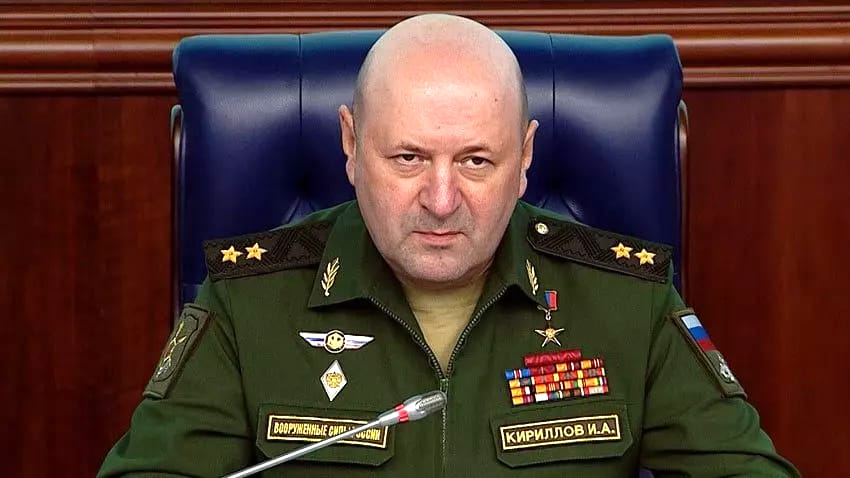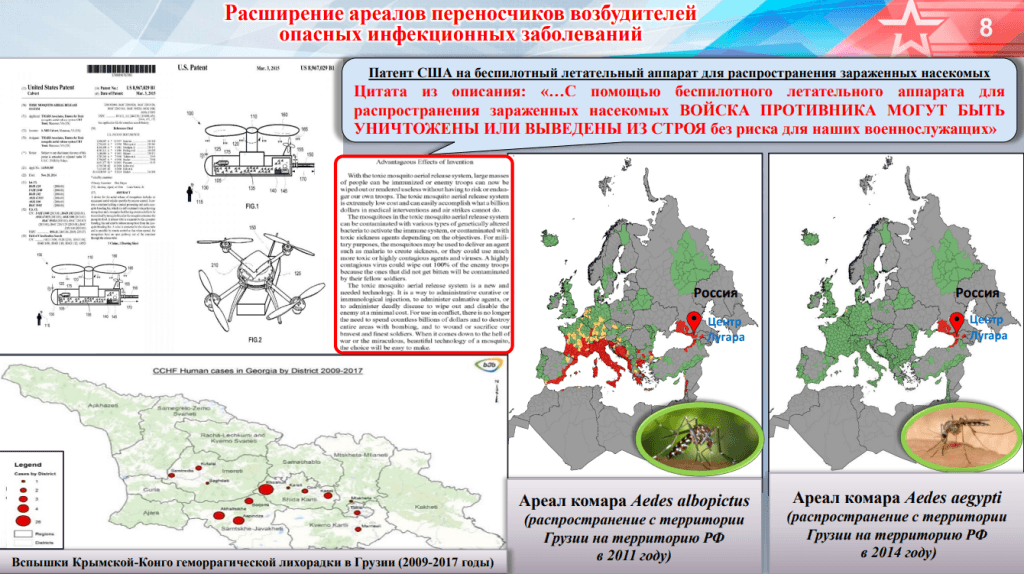Material updated ↓
Russia's permanent representative to the UN accused the United States of developing a drone to spread infected insects. According to him, the United States already has a patent for such a drone. We checked whether such a drone was actually developed in the USA.
On October 28, 2022, at the UN Security Council meeting, the permanent representative of the Russian Federation to the UN Vasily Nebenzya accused The United States is developing a drone to transport infected mosquitoes. In his speech Nebenzya toldthat the United States already has a patent for such a drone. “The drone transports a container with a large number of infection-carrying mosquitoes to a given area and releases them. When they bite, mosquitoes infect the people they attack with pathogens of particularly dangerous diseases,” Nebenzya shared the details. According to him words, this development violates the Biological Weapons Convention. Nebenzi’s speech was quoted by many Russian Media. And social network users created fighting mosquito memes.
The Russian Ministry of Defense expressed its concern about an American drone with infected mosquitoes back in March 2022. Then the media wrotethat shortly after the start of the “special military operation” in Ukraine, the Russian military managed to seize hundreds of documents proving that American specialists were studying unconventional methods of distributing biological weapons. Chief of the Radiation, Chemical and Biological Defense Troops of the Russian Armed Forces, Lieutenant General Igor Kirillov statedthat the US has patented a drone for dispersing infected mosquitoes. He referred Patent No. 8,967,029 issued by the United States Patent and Trademark Office. The description of the patent allegedly states that this drone can destroy or disable enemy troops without risk to US military personnel. Kirillov also added: “As you know, according to American law, a patent in the United States cannot be granted in the absence of an actual device. Thus, it can be concluded that the container as a means of delivering biological agents has been developed and produced.”

A few months later, in October 2022, the same patent No. 8967029 mentioned and Russia's permanent representative to the UN Vasily Nebenzya. He explained that fighting mosquitoes can be more effective than the most modern weapons and military equipment, and demanded that an international investigation be launched into the involvement of the United States in the development of biological weapons in Ukraine.
Interestingly, the Russian military became aware of this patented drone several years ago. In 2018, the Russian Ministry of Defense already carried out briefing, which mentioned the same drone with the same patent No. 8967029. Only then speech was walking about US biological developments in Georgia, and not in Ukraine. In 2018, the Ministry of Defense analyzed materials, published by former Georgian Minister of State Security Igor Giorgadze, who accused The United States is conducting secret experiments on residents of Georgia. One of the documents published by Giorgadze was precisely the same patent US No. 8967029 dated March 3, 2015. In 2019, Kirillov included information about the American drone in his scientific article "Analytical review of studies with vectors of arbovirus infections conducted by specialists of the US Department of Defense."

Patent No. 8967029 really exists and is in the public domain. In 2015, the US Patent and Trademark Office approved a patent for a drone that would be capable of spraying toxic mosquitoes - the Toxic Mosquito Aerial Release System (TMARS). However, the Ministry of Defense and Russia's permanent representative to the UN were mistaken in two aspects. Firstly, having an approved patent does not mean that the device has already been created and is ready for use, as claimed Kirillov. From the US Patent and Trademark Office website writtenthat a detailed description of the device is required for the grant of a patent, but nothing is said about the need for a finished prototype. From applications TMARS patent makes it clear that the author only thought through the design and did not manufacture the device itself: “The modifications described above, including drawings, are examples and only illustrate the invention. Other embodiments will be apparent to those skilled in the art."

Second, the patent applicant is a private individual named Calvert S. Mill. This man has dozens of applications for patents on a variety of devices published by him from 2013 to 2015. For example:
- foam for immobilizing robots;
- bullet that causes stroke;
- body bag for crime scene investigation;
- breast support system;
- explosive tank barrel blocker;
- superglue gun.
There is no evidence that Calvert S. Mill is in any way connected with the Pentagon or any American department. In addition, as the fact-checking agency Vox Ukraine noted, according to the American Law on secrecy in inventions of 1951, the US government is required to classify patent applications containing sensitive information. This requirement applies to inventions, including those owned by individuals or private companies. If the Pentagon were planning to make similar drones with combat mosquitoes or had already used them, this patent with detailed drawings might not be in the public domain.
So, the US actually approved a patent for a drone that sprays mosquitoes. But, unlike Vasily Nebenzi’s version, the idea does not belong to the US authorities, but to a private inventor who, apparently, has no connection with the American military structures. And there is no indication that the United States plans to take such a drone into service.
Correction 02/11/2022: According to the original title publications, this analysis dealt specifically with the Pentagon and its involvement or non-involvement in the development of the drone. However, the Pentagon is not mentioned in Russian media publications about this patent. Vasily Nebenzya, speaking about the patent at a meeting of the UN Security Council, laid the blame on the United States as a whole, and not specifically on the American military department. Therefore, we have removed the reference to the Pentagon from the title of this analysis. And since the new headline is true — The US Patent and Trademark Office did grant such a patent, — the verdict was also changed from “False” to “True”. Despite this, the remaining arguments and conclusions presented in this analysis regarding the reality of introducing this invention into the US military arsenal still remain valid.
Cover image: Twitter
Is it true
Read on the topic:
- "Vox Ukraine". Manipulation: The Pentagon developed a drone to spray toxic insects
- Is it true that, at the request of the United States, Ukraine was working on a mosquito-borne virus?
If you find a spelling or grammatical error, please let us know by highlighting the error text and clicking Ctrl+Enter.






